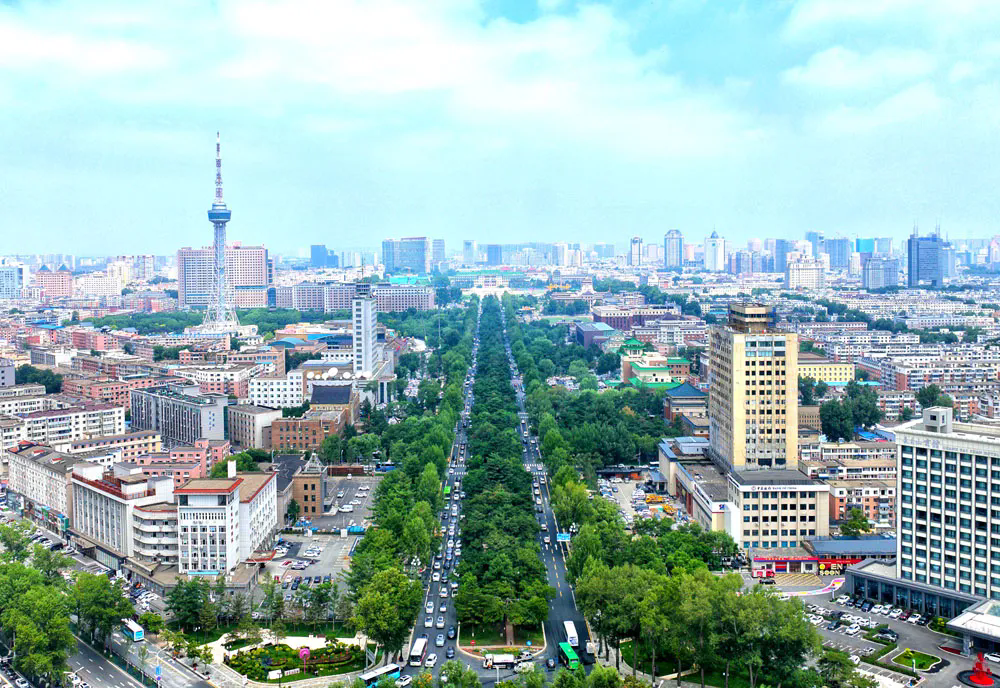"Xinmin Embracing the New": Unlocking the Code for Urban Renewal
In the evolution of cities, renewal and transformation have always been the "twin engines" driving development. Today, as the homogenization of urban landscapes becomes increasingly prominent, a key challenge for urban governance in the new era is how to preserve the cultural roots of old cities while revitalizing new momentum for growth. Recently, with Xinmin Street Historical and Cultural Block, honored as "China's Historical and Cultural Street", completing its protective restoration, its innovative practice, anchored in "dynamic inheritance" and propelled by the concept of "Xinmin Embracing the New", offers a valuable model for reconciling the tension between preserving urban cultural DNA and achieving functional revitalization.

The renewal of Xinmin Street exemplifies Changchun's precise response to the demands of high-quality urban development in the new era. As China's urbanization enters a new stage focused on optimizing existing assets, urban construction is shifting from extensive expansion to refined enhancement. The project to protect, enhance, revitalize, and utilize the Xinmin Street Historical and Cultural Block serves as a positive practice of leveraging historical blocks as a fulcrum to drive improvements in urban quality. This endeavor is not merely a restoration of architectural facades; it is a continuation of the city's cultural fabric, a redefinition of the value of public spaces, and an update of urban life scenarios. There are refreshed brick-paved walkways, widened and smooth asphalt roads, thoughtfully arranged greenery and blossoms, and so on. Every brick and tile serves as a key to unlocking the city's memory and is critical to transforming the street and even the city from mere "physical space renewal" to "ecological rebirth". This renewal approach makes historical culture tangible and perceptible, while simultaneously elevating function and quality through iterative commercial formats and reconfigured public spaces. It aligns closely with modern urban renewal principles that balance "preservation, renovation, and demolition", embodying the essence of what makes Changchun unique.
At the heart of a city lies its people. The "new" in "Xinmin Embracing the New" is not only about the evolution of urban spaces but also about responding afresh to people's aspirations for a better life. Today, as urban residents' expectations for life have risen beyond the basic need of "having a shelter" to include diverse pursuits such as cultural enrichment, emotional resonance, quality experiences, and artistic engagement, Xinmin Street has responded by revitalizing its historical buildings, enriching public spaces with artistic expression, and creating immersive cultural scenes. Here, citizens and tourists alike can trace the echoes of history when touching the brick walls, linger in a book-scented café, or immerse themselves in the vibrant atmosphere of festive markets. This "people-centered" vision for urban renewal has transformed the historical block from a mere time capsule of urban civilization into a vibrant space that fulfills people's aspirations for a better life, vividly embodying the development philosophy of putting people first.
From an economic perspective, urban renewal is both a "strong engine" driving effective investment and a "stabilizer" unlocking domestic demand potential. The Xinmin Street renovation project, involving architectural restoration, landscape improvement, and cultural venue revitalization, boasts a long industrial chain and a strong driving effect. Especially since its official opening on July 5, the street has drawn crowds through the "historical and cultural IP + immersive experience" model and is set to catalyze cluster effects in tourism, catering, cultural creativity, and related industries, becoming a new growth point driving Changchun's economic transformation and upgrading.
Particularly noteworthy is the respect for cultural heritage embedded in all relevant departments throughout Xinmin Street's renewal process. Upholding the principle of "restoring the old as old", the project transcends formal replication. By creating a dialogue between modern materials and traditional techniques and by fusing functional replacement with historical memory, the rejuvenated old buildings have retained their structural essence and aesthetic spirit while gaining spatial vitality and a sense of breathability suited to contemporary living. This vivid interplay between past and present stands as a best-case interpretation of "an organic unity of protection and inheritance". When historical culture evolves from static architectural patterns to dynamic elements of everyday life, urban renewal preserves the soul of culture while endowing it with forward-looking vitality—a key insight offered by the Xinmin Street renovation project.
Looking at the bigger picture, the stunning metamorphosis of Xinmin Street is not only a microcosm of how Changchun has creatively tackled urban renewal challenges but also a pioneering paradigm for urban development across time and space. It charts a path of synergy among quality enhancement, improvement of people's livelihoods, economic growth, and cultural inheritance, enabling history and the present to converse within the city's fabric. As Changchun, a city known as the "Cultural City", "Film City", and "Automobile City", draws inspiration from the "Xinmin Embracing the New" initiative, it is weaving its historical heritage into a foundation for development and infusing innovation into its urban bloodstream, envisioning a high-quality future where the past and present illuminate each other in a vibrant, ever-renewing urban landscape.
Source: Changchun Government Affairs Editor: LI Ye



